Writing the Ranger in Time books is a dream job for a long list of reasons. I get to spend my days making up adventures for a time-traveling golden retriever. I write for amazing, enthusiastic readers who devour chapter books like M&Ms. And every time I send Ranger off on a new adventure in history, it feels like I get the chance to time travel, too. I read piles of books and devour diaries, journals, letters, and newspaper articles from each time period Ranger visits. I tend to save my favorite part of the research for last — the field trips.
When I was working on Rescue on the Oregon Trail, I traveled to Independence, Missouri, a jumping-off point for the Oregon Trail, to see where Ranger would have met the Abbott family for the first time. Danger in Ancient Rome sent me overseas to explore the ruins of the Roman Colosseum and Ludus Magnus gladiator school where Marcus and Quintus trained.
The third book in the series, Ranger in Time: Long Road to Freedom, is the story of two enslaved children who escape from a tidewater Maryland tobacco plantation and make their way north in search of safety and freedom.
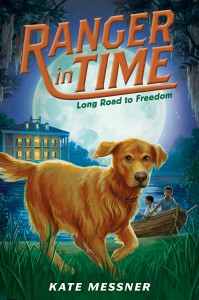
Ranger travels with Sarah and Jesse through Maryland, Delaware, Pennsylvania, New York, and Vermont. I decided that the best way to gather details from all those settings was to plan a road trip that traced my characters’ imaginary journey, so in the summer of 2014, my daughter and I flew to Philadelphia, rented a car, and drove south to the Mount Harmon plantation in tidewater Maryland, where we’d arranged a tour. This planation became the model for the Bradley planation in Long Road to Freedom.
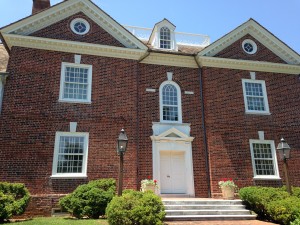
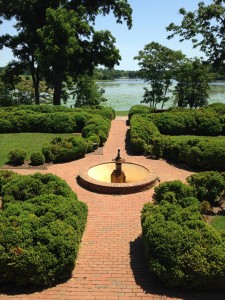
So often, details of a site visit help to inspire the plots for my Ranger in Time books. That’s why a creekside tobacco prize house, where tobacco is packed in barrels for shipping, plays an important role in Long Road to Freedom.

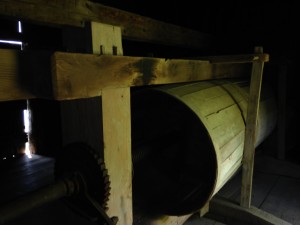
The plantation house at Mount Harmon has a widow’s walk, where someone could spot an approaching boat. That scribble in my notebook became a plot element, too.
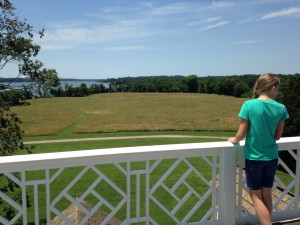
From Maryland, Sarah and Jesse escape through Odessa, Delaware to Philadelphia. My daughter and I explored real-life settings like William Still’s house and the Mother Bethel AME Church in Philadelphia, and I took notes on details that I thought Sarah and Jesse might notice, too.
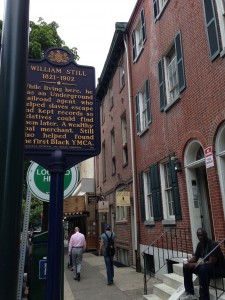
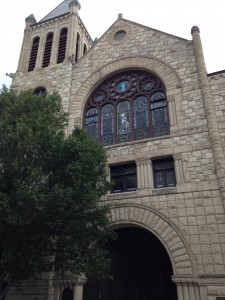
From there, Sarah and Jesse make their way to Albany and end up, for a time, at Rokeby, a farm owned by the Robinson family in Ferrisburgh, Vermont. That farm is a museum now and tells the story of two real-life enslaved men who found their way north to Vermont in the 1800s. Interestingly enough, the “hidden rooms” that we hear about in many Underground Railroad stories are nowhere to be found here. Vermont was a free state, and historians say it was no secret that the Robinson family, who were powerful land owners, were helping and employing people who had escaped from their enslavers. Some of those men reportedly slept in a not-so-secret room above the kitchen and worked openly in the fields and with the sheep, alongside the other workers.
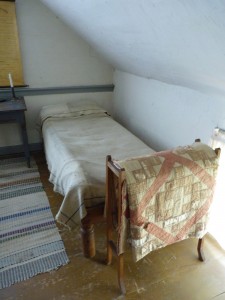

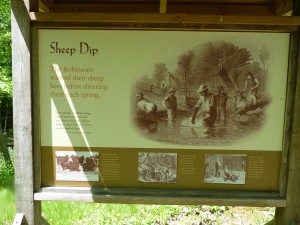
Across Lake Champlain, in Northern New York, it was a different story. In early 19th century Clinton County, historians believe that about a third of people were against slavery, about a third were pro-slavery, and a third wanted nothing to do with the whole issue. That meant that abolitionists who did help escapees had to do so more in secret. This barn owned by the Keese Smith family, documented abolitionists, does indeed have a secret room that might have been used as a hiding place.
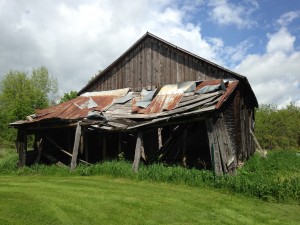

I spent some time in this damp, cobwebby space with my notebook, soaking up the details and imagining what it would have been like on a dark night, with cows walking over the boards on the floor above.
As I read and research and travel and read some more, elements of the story take shape, and then it becomes even more fascinating to try and see all these places through my characters’ eyes. You’ll recognize some of these settings if you read Ranger in Time: Long Road to Freedom – and I hope seeing these photos from my research will help you to imagine their journey even more vividly.
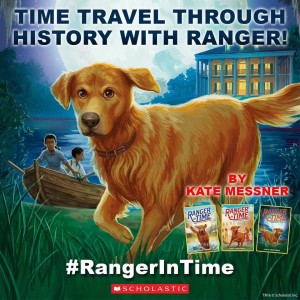
Want to hear more about my research for the first two Ranger in Time books, set on the Oregon Trail and Ancient Rome? Check out this virtual author visit!




